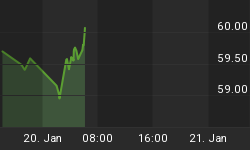Major market indices closed at multi-month highs on January 25, 2011 (FOMC announcement session), followed by a (small) pullback on the then following (yesterday's) session.
Looking at historical precedences when the SPY's (S&P 500 SPDR) had closed either at a 30-day high or low on an FOMC announcement session, followed by a lower close immediately thereafter, this had significantly positive implications over the course of the next couple of weeks.
Table I below shows the SPY's (S&P 500 SPDR) performance (cumulative returns) 1 day and 4 days later, at the end of the then following week (in this event on Friday, February 3), 2 weeks later (end-of-week), and at the end of the respective month in the event the SPY had closed either at a 30-day high or low on an FOMC announcement session, followed by a lower close immediately thereafter in the past.
Although returns the next day (in this event on Friday, January 27) had been mixed (notably a 1:6 ratio in favor of -1.0%+ moves on the downside), the SPY had closed at a higher level 4 days later, at the end of the then following week and 2 weeks later (end-of-week) on 17 | 18 | 19 out of 20 occurrences (with 1.0%+ moves on the upsides outnumbering -1.0%+ moves on the downside by an extraordinary wide margin), and had never closed lower -1.0%+ at the end of the month, but higher +1.0% on 16 out of 20 occurrences.

Table I - SPY at 30-day high or low on FOMC announcement session. down thereafter
Conclusion(s)
For the time being, the trend most probably remains up, and lower prices (intraday or end-of-day) on Friday, January 27 might provide a favorable intermediate-term buying opportunity.
Have a profitable week,















